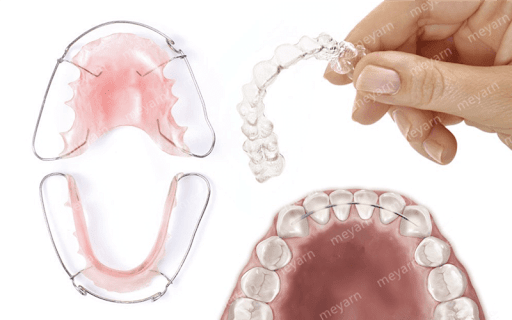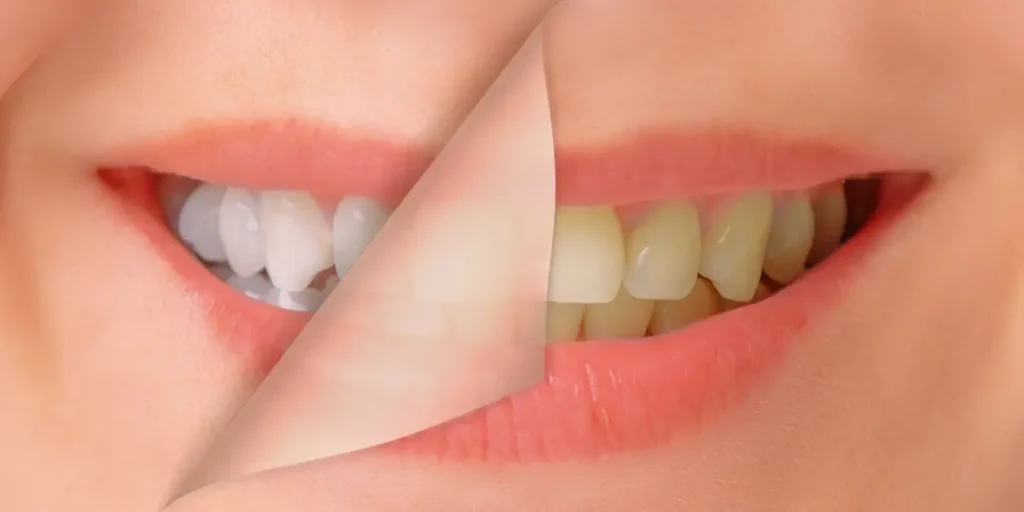It’s an exciting time! Your active treatment plan for braces is finally over and you recently visited your orthodontist to wrap it up. You’re excited about your new smile, with beautifully straight and aligned teeth.
Then you probably found out you had to use a retainer after braces to keep your beautiful smile in place. It takes time for your teeth to firmly set in their new alignment, with the first three to six months the most important. It’s a small price to pay, though, after the investment you made to get the smile you wanted.
In this article, we break down exactly why a retainer after orthodontic treatment is so important, how long you’ll have to wear it, the different types of retainers, and how to care for them.
Why Retainers Are So Important For Your Smile
Your teeth moved during treatment with braces but that’s not all that moved. The periodontal ligaments, which attach the roots of the teeth to the jaw, went through changes, too. Some new ligaments were formed while others are stabilizing in new positions. This is true whether you had regular metal braces or clear aligners like Invisalign. Retainers are used to keep everything in place until firmly set.
Remember, if you don’t use your retainer after Invisalign or any other kind of braces, teeth can quickly revert to their previous positions. In extreme cases, patients may need to get braces or aligners again.
The investment you made for your new, straight smile is significant, in both money and time. Protecting that investment is another reason to use retainers after orthodontic treatment.
Your retainer will be custom-made for your mouth. This is done using 3-D imaging to make an impression of the new and properly aligned configuration of your mouth. From that impression, the retainer is made and your orthodontist will show you how it should be used.
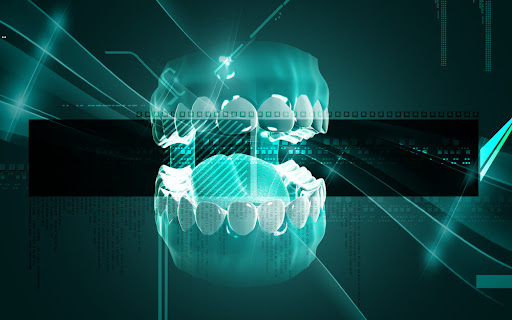
How Long Will You Have To Wear the Retainer for Your Teeth?
There is no one-size-fits-all answer to this common question. Your orthodontist will work with you to develop a schedule, especially during the first year after active orthodontic treatment. You can help by wearing the retainer as directed so that the bones and teeth stabilize correctly and as quickly as possible. The retainer’s job is to provide the proper amount of support to accomplish that goal.
The first six months are the most important. The bones and ligaments around your teeth strengthen to hold everything securely in place. They need the retainer to support the final alignment achieved by the braces or aligners you used. During this time, the retainer is worn full-time except when you eat or brush and floss your teeth.
Your orthodontist will see you periodically to monitor how your teeth are settling into their new alignment. After the first six months or so, you may be instructed to wear the retainer a few hours less each day and at night (unless you are using a fixed retainer, more on this below).
Nighttime use will probably be a lifetime strategy to protect the alignment of your teeth. At this point, you simply include it in your nightly oral hygiene routine to protect your investment in time and money to achieve your new smile.
The Different Types of Retainers
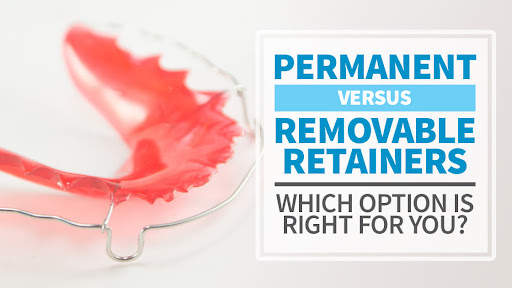
You will work with your orthodontist to decide on the best type of retainer for you. There are two main types to consider:
Removable Retainers
As the name implies, removable retainers can be easily taken out of the mouth by the patient. The retainer is removed when you eat or when you brush and floss your teeth. One of the most popular types of removable retainers is the Essix retainer (also known as a Tru-Tain retainer). Patients like this retainer because it is nearly invisible on their teeth.
Removable retainers are easy to keep clean but they are also more easily misplaced. It’s important to store it properly when it’s not in your mouth, especially when you are away from home. If it is broken or lost, you will have to replace it as quickly as possible to protect your teeth. This adds to the cost of your orthodontic care.
Fixed Retainers
Fixed retainers are bonded into place and are only removed by your orthodontist. This type of retainer fits behind your upper or lower front teeth with a thin wire that sits across the front of the teeth. It’s harder to keep your teeth clean with a fixed retainer which is why many patients and orthodontists prefer removable retainers.
But, because this retainer is bonded into your mouth, there is no worry about losing it. Depending on the age of the patient, this can be an advantage. Younger patients may benefit from the fixed retainer for this reason.
Caring For Your Retainer Properly
Your retainer needs to last to be able to effectively keep your teeth in place. So, it should become part of your oral health routine, no matter what type you choose. Here are some tips on how to care for your retainer properly:
Routinely Clean It
If your retainer is fixed, use the same cleaning procedure you used with your braces. It’s important to clean between the teeth and under the retainer to get all food particles and also clean the retainer. A Waterpik helps with this if you can get one.
With a removable retainer, there are cleaners specifically made for retainers that can be helpful. Rinse the retainer before and after you use it and then thoroughly clean it according to instructions from your orthodontist or the cleaner you are using. As you lessen the use of the retainer in your mouth, soak it in distilled water or the cleaner you’ve chosen when it isn’t in your mouth. Make sure you don’t let it dry out.
Store It In Its Case
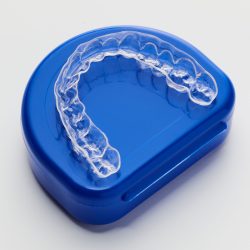
It is important to store your retainer in its case to prevent loss and damage. For a removable retainer, it is tempting to wrap it in a napkin when eating; this will eventually lead to forgetting it somewhere. Get in the habit of carrying the case with you. Always store it there so you don’t risk having to replace it.
Keep It Out of Hot Water
You may think you should wash the retainer in hot water to keep it sanitary. However, hot water causes the retainer to shrink and/or warp and then it will no longer fit. So, clean it in room temperature water and use a cleanser designed for retainers to keep it sanitary and safe.
Remember, Dogs Love Retainers!
When a dog sees the retainer out of your mouth it thinks it’s a toy. This is one of the leading causes of damaged or lost retainers. Store it properly and you won’t be tempting your pet!
Keep Your Smile Protected After Orthodontic Treatment With Retainers
Without your retainer, your beautiful new smile can be lost, along with your investment in time and money to achieve it. So make sure to follow your orthodontist’s plan for wearing your retainer and the tips shared here for protecting it. You want to maintain that beautiful new smile for the long run!
The team of Haddonfield orthodontic specialists here at Amy James & Associates is ready to not only provide the best orthodontic treatment but also the experience and knowledge to maintain your smile for life. Don’t hesitate to contact us with any questions you may have about your retainer or any other orthodontic treatment.

